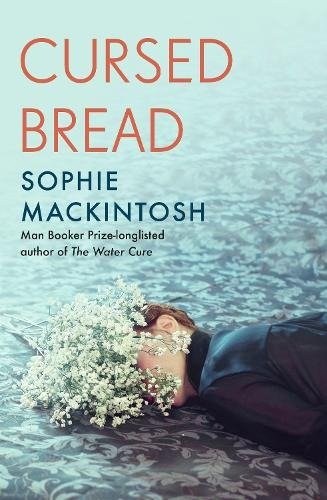Cursed Bread, Sophie Mackintosh
‘I think about how desire grows in the spaces around the known, where things are at their most and least real, where the terror of all the possibilities fracturing out through our lives is suspended, momentarily, so we can look them in the eye for once, and isn’t that what we are searching for when we debase ourselves for love, one moment of certainty in this strange and beautiful world.’
With its eerie and uncanny feel, I began Cursed Bread beguiled into thinking it was a dystopian novel, only later to find out that it is based on real events. In August 1951, the small French town of Pont-Saint-Espirit succumbed to a mass poisoning; a scourge of illness and hallucinations plagued the town’s people and pandemonium and hysteria erupted; 300 people were affected, 5 died, and 60 found themselves in psychiatric hospitals. Scientists have argued that the most likely cause of the infliction was in fact bread, potentially poisoned with ergot fungus, producing LSD-like effects in its consumers. But as the author notes, ‘There are many theories regarding the source of this catastrophe. None have ever been proved.’
Needless to say, both the facts and room for speculation are an incredible starting point for a work of fiction. Sophie Mackintosh, Booker-longlisted author of The Water Cure, bends the history to her will, interweaving and interchanging notions of poising and hallucination with those of sexual obsession, fantasy, and infatuation.
The story unravels following the arrival of the Ambassador and his wife Violet, when narrator Elodie’s provincial life is jolted, suddenly imbued with a charge of tension and desire. Violet’s decadent glamour knocks up against Elodie’s rustic domesticity while her erotic relationship with her husband, at times violent, is set in contrast to Elodie’s marriage to the unfeeling and untouching baker. The couples become intertwined in a tangled web of sex and desire, but it is Elodie’s obsession with Violet that dominates the novel. The novel walks a tightrope of desire, teetering on an edge between self and object of infatuation, jealousy and lust.
It is also with the arrival of this exotic couple that something in the town changes, darkens, and intensifies. A string of strange occurrences begins, intertwined with the gossip and toil of everyday life and labour. By blending elements of the familiar with the unfamiliar, Mackintosh’s uncanny tone is pitch perfect. A quaint bakery set against scenes of masturbation; provincial fields mottled with scores of dead horses; a young village boy throwing himself into a raging bonfire at the midsummer festivities; icing sugar mixed with powdered glass. And bread is the perfect metaphor; it’s biblical, it’s bucolic, and it becomes sexually charged in Cursed Bread.
Reading Cursed Bread feels like being swept out to sea, carried by the prose, dream-like and hazy. It is heady, all-consuming, and mesmerising. And when the poisoning inevitably comes, and the town succumbs to its pre-ordained fit of madness, it reads like the nine circles of hell.
Editorial Picks




